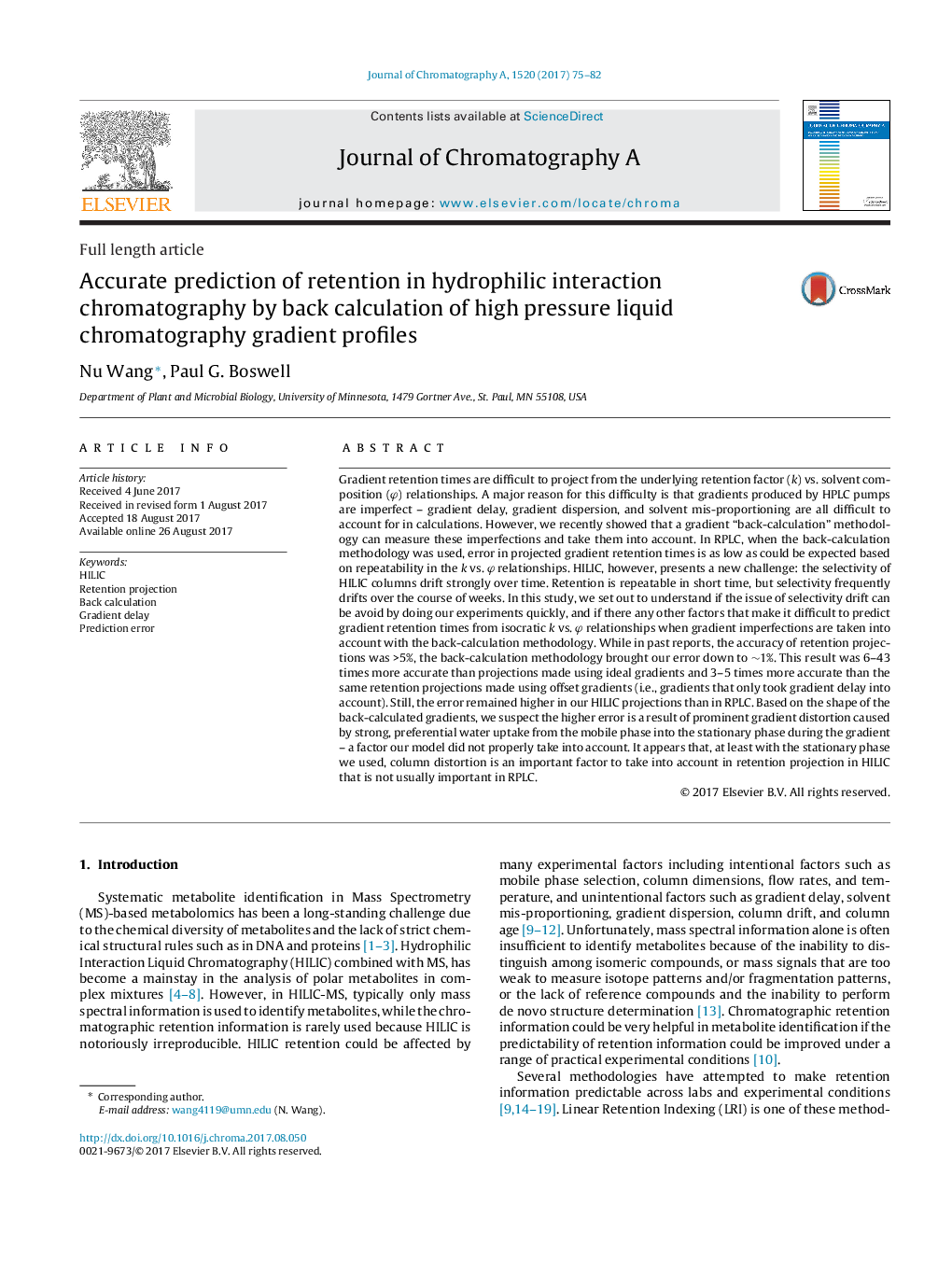| Article ID | Journal | Published Year | Pages | File Type |
|---|---|---|---|---|
| 5134857 | Journal of Chromatography A | 2017 | 8 Pages |
â¢First application of the methodology “retention projection with back calculation” to HILIC.â¢Performance of the most accurate gradient retention projection methodology in HILIC.â¢Suggest column distortion can be a significant factor to consider when projecting retention times in HILIC.â¢Investigation of effects of flow rate and gradient slop on gradient retention projection accuracy in HILIC.â¢Comparison of the gradient retention projection accuracies when using ideal, offset, and back calculated gradients in HILIC.
Gradient retention times are difficult to project from the underlying retention factor (k) vs. solvent composition (Ï) relationships. A major reason for this difficulty is that gradients produced by HPLC pumps are imperfect - gradient delay, gradient dispersion, and solvent mis-proportioning are all difficult to account for in calculations. However, we recently showed that a gradient “back-calculation” methodology can measure these imperfections and take them into account. In RPLC, when the back-calculation methodology was used, error in projected gradient retention times is as low as could be expected based on repeatability in the k vs. Ï relationships. HILIC, however, presents a new challenge: the selectivity of HILIC columns drift strongly over time. Retention is repeatable in short time, but selectivity frequently drifts over the course of weeks. In this study, we set out to understand if the issue of selectivity drift can be avoid by doing our experiments quickly, and if there any other factors that make it difficult to predict gradient retention times from isocratic k vs. Ï relationships when gradient imperfections are taken into account with the back-calculation methodology. While in past reports, the accuracy of retention projections was >5%, the back-calculation methodology brought our error down to â¼1%. This result was 6-43 times more accurate than projections made using ideal gradients and 3-5 times more accurate than the same retention projections made using offset gradients (i.e., gradients that only took gradient delay into account). Still, the error remained higher in our HILIC projections than in RPLC. Based on the shape of the back-calculated gradients, we suspect the higher error is a result of prominent gradient distortion caused by strong, preferential water uptake from the mobile phase into the stationary phase during the gradient - a factor our model did not properly take into account. It appears that, at least with the stationary phase we used, column distortion is an important factor to take into account in retention projection in HILIC that is not usually important in RPLC.
